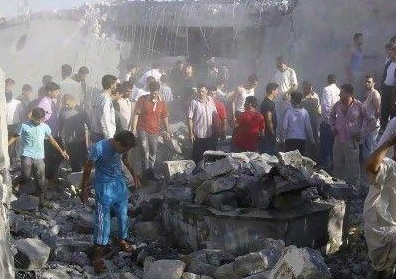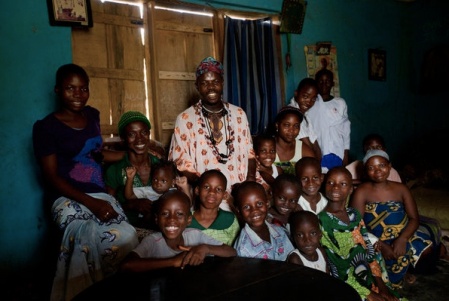There was an illuminating article in The Economist about emerging economies like India and Brazil setting up a formal infrastructure for foreign aid and development. China has already been a big player for the past five years. Evidence that India is begin to grow as a major global player in international foreign poliy.
CHARITY BEGINS ABROAD
Aug 13th 2011

BETWEEN 1951 and 1992 India received about $55 billion in foreign aid, making it the largest recipient in history. Now it seems on the verge of setting up its own aid-giving body. A spokesman for the foreign ministry says the government is in “active discussions” to create an India Agency for Partnership in Development (IAPD), an equivalent of America’s Agency for International Development (USAID) or Britain’s Department for International Development (DFID). Bureaucrats in other ministries are dragging their feet but Gurpreet Singh of RIS, a Delhi think-tank, says the government will announce the body within months, and give it $11.3 billion to spend over the next five to seven years.
India’s switch from the world’s biggest recipient to donor is part of a wider change shaking up foreign aid. Ten years ago the vast majority of official development assistance came from about 15 rich industrialised countries that are members of the Development Assistance Committee (DAC), a 50-year-old club of the aid establishment. Even today, America remains the largest single donor, dishing out $31 billion in 2010.
But second on the list, if reports monitored by New York University’s Wagner School are to be believed, would be China, which gave away $25 billion in 2007. (Statistics on aid from new donors are dodgy and the line between aid and trade is blurred; by another count China’s officially reported aid was only $1.9 billion in 2009.) Brazil, which is also thinking about setting up its own aid agency, gives up to $4 billion a year of assistance, broadly defined. That would put it on a par with Sweden, Italy—or Saudi Arabia, another big donor outside the establishment club. If India gives around $2 billion a year, it would rank with Australia or Belgium.
According to a new report by a non-governmental organisation called Global Humanitarian Assistance, aid (conservatively defined) from non-DAC countries rose by 143% in 2005-08, to $11.2 billion, before falling during the financial crisis. Aid from the BRICs (Brazil, Russia, India and China) more than doubled. The establishment donors’ aid monopoly is finished.
Aid from upstart donors is not exactly new. India has trained poor countries’ civil servants for decades, in a programme called Indian Technical and Economic Co-operation (ITEC). The Soviet Union and Maoist China spent billions helping poor client states during the cold war. What is new is that these programmes are expanding rapidly (in the case of China and Russia, after a steep fall). ITEC will train 5,500 people from 120 countries this year, says Vishnu Prakash of the foreign ministry (up from 3,400 in 2005). Before 2007, Russia spent about $100m in aid. This rose to an average of $422m a year between 2007 and 2010, according to the finance ministry.
Over the past decade China has evolved from a net recipient to net donor. A milestone was reached in 2005, when the World Food Programme dispatched its last shipment of grain after donating to China for some 25 years. This year Britain’s DFID wound up its bilateral aid programme in China. At the same time, China has become a far bigger donor. Wen Jiabao, the prime minister, has promised that in 2010-13 China will provide $10 billion in low-interest loans to African countries, bolster the China-Africa Development Fund by $1 billion (bringing it to $5 billion) and cancel debt owed by highly indebted countries with which China has diplomatic relations. In April this year the Chinese government issued its first white paper on its foreign-aid programme. The amount budgeted for aid had “increased rapidly” since 2000, it said, with growth of nearly 30% a year between 2004 and 2009.
The new donors stress that their aid is different from that provided by the West. They reject the traditional idea of beneficent donor helping indigent client and claim to be engaged in “South-South co-operation”. China says the “first principle” of its development assistance is “equality and mutual benefit in providing aid”. In practice, though, the real differences with the West lie elsewhere.
Most new donors give priority to their neighbours. Saudi Arabia gives much of its aid to other Arab states. During the 2009 financial crisis Russia helped out the struggling countries in its “near abroad”, including Tajikistan and Armenia. Russia keeps afloat the thuggish and autocratic regime in Belarus through low energy prices and gives roughly $1.5 billion to Abkhazia and South Ossetia, areas which have broken away from Georgia and are recognised by Russia as sovereign states.
The Indian government sees aid as a way of improving miserable ties with neighbours. A symbolic offer of $25m to Pakistan a year ago, via the United Nations, to assist in flood relief, was unlikely to have melted many hearts. But huge investments in hydropower in Bhutan (in return for the guaranteed supply of fixed-price electricity into India’s grid) helped both countries. India would now like to do something similar with Nepal. India extends large, soft loans to curry favour with a friendly regime in Bangladesh and is paying for post-war reconstruction in Sri Lanka. With Western support, it is also building roads, a power grid and a new parliament building for its ally, Hamid Karzai, in Afghanistan, where India is the fifth-largest donor.
A lot of new aid is also given partly in support of commercial interests. The Saudi government says one of its aims is to promote non-oil exports. But the biggest pursuer of such interests is China. Many of its aid projects help build infrastructure that benefits Chinese investment. It has helped rebuild the Tanzam railway, for example, linking Zambia’s copper belt, where China has large projects, and Dar-es-Salaam, where it has modernised the port. The white paper seeks to counter Western views that much of its aid goes to feed its appetite for oil and minerals. It says only 8.9% of concessional loans have been used to support the extraction of such resources. But it gives no details. Much of the 61% of loans for transport, communications and power may also help mining efforts.
The big unresolved question for the new donors, argues Duncan Green, head of research at Oxfam, an NGO, is how far they adopt the policies and institutions of Western donors or how far they go their own way, blurring boundaries between aid and investment. There have been one or two nods towards Western ideas recently. The BRICs are giving more through multilateral channels, moving away from their usual government-to-government help. China’s white paper uses Western-style language about “increasing recipient countries’ capacity”. But by and large the new donors think their model of giving aid is better. As their contributions soar and Western ones stagnate or shrivel, the aid world is seeing genuine competition.














